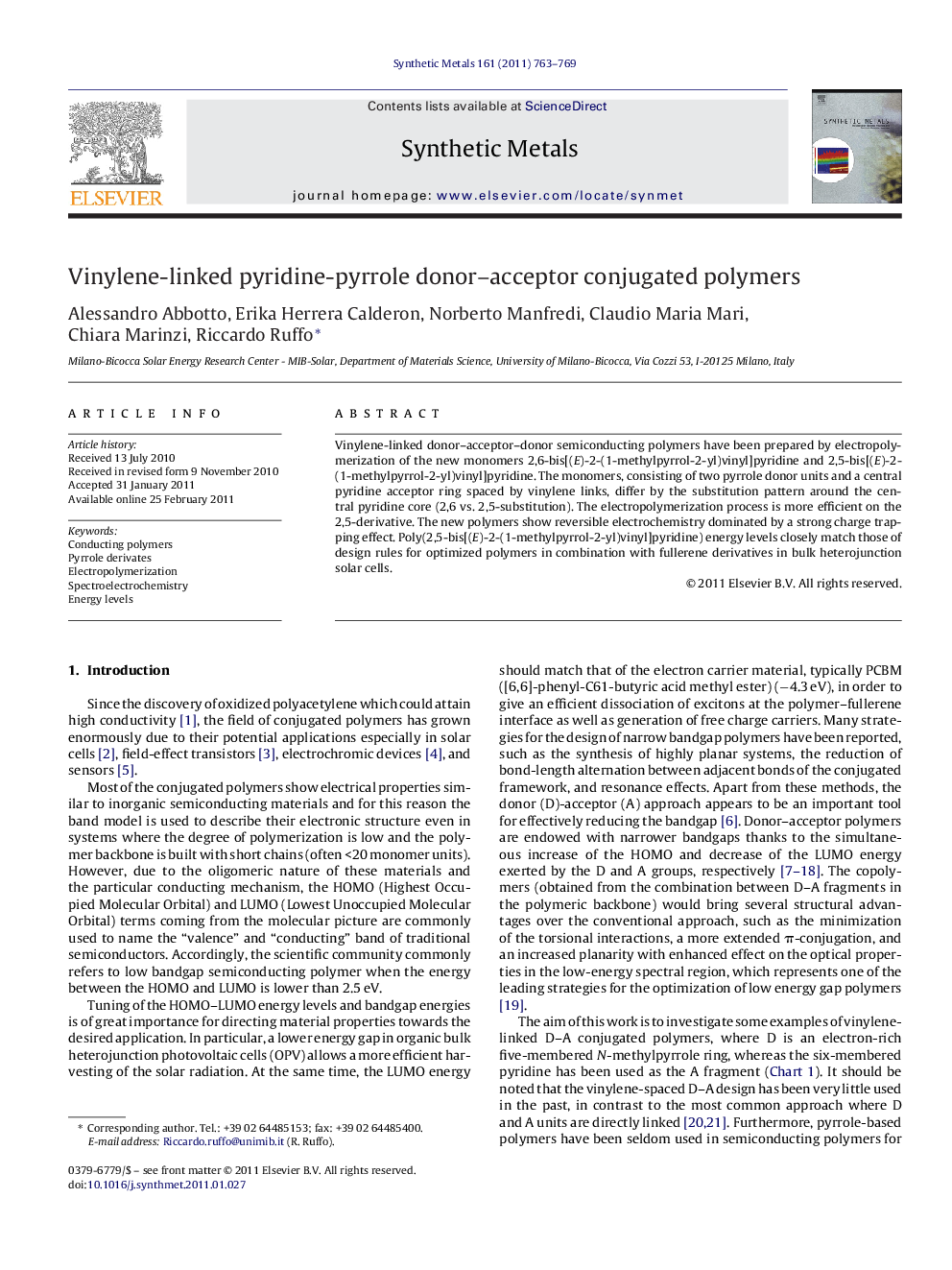| Article ID | Journal | Published Year | Pages | File Type |
|---|---|---|---|---|
| 1442059 | Synthetic Metals | 2011 | 7 Pages |
Abstract
Vinylene-linked donor-acceptor-donor semiconducting polymers have been prepared by electropolymerization of the new monomers 2,6-bis[(E)-2-(1-methylpyrrol-2-yl)vinyl]pyridine and 2,5-bis[(E)-2-(1-methylpyrrol-2-yl)vinyl]pyridine. The monomers, consisting of two pyrrole donor units and a central pyridine acceptor ring spaced by vinylene links, differ by the substitution pattern around the central pyridine core (2,6 vs. 2,5-substitution). The electropolymerization process is more efficient on the 2,5-derivative. The new polymers show reversible electrochemistry dominated by a strong charge trapping effect. Poly(2,5-bis[(E)-2-(1-methylpyrrol-2-yl)vinyl]pyridine) energy levels closely match those of design rules for optimized polymers in combination with fullerene derivatives in bulk heterojunction solar cells.
Related Topics
Physical Sciences and Engineering
Materials Science
Biomaterials
Authors
Alessandro Abbotto, Erika Herrera Calderon, Norberto Manfredi, Claudio Maria Mari, Chiara Marinzi, Riccardo Ruffo,
